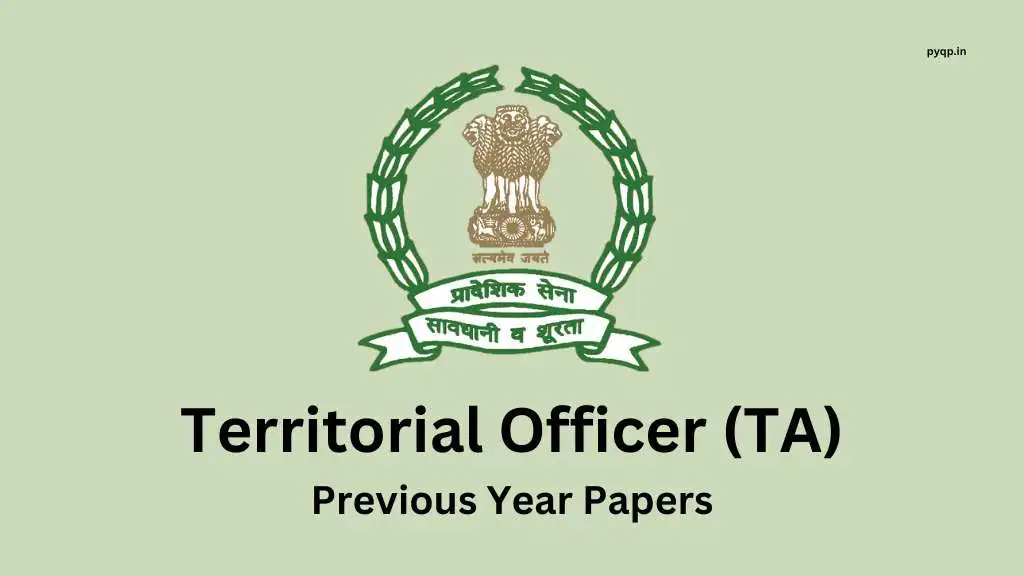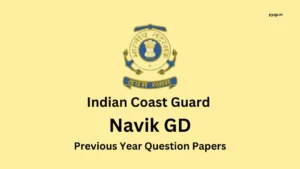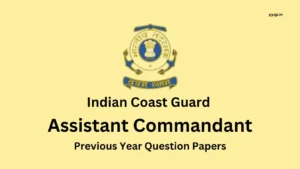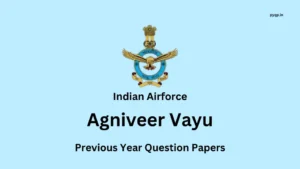TA Officer Previous Year Question Papers

Join Territorial Army releases the notifications to conduct recruitment for the post of TA Officer which stands for Territorial Army Officer. Candidates who want to join the army as an officer at a later age can fill out this form and stand for the competition. It is not a permanent job and the lesser benefits are given to territorial army officers than regular army officers. In this blog, we provide previously held papers of the TA Officer and discuss the exam details.
1. Eligibility for TA Officer
a.) Nationality
- Only citizens of India (male and female).
b.) Age
- Minimum Age – 18 years
- Maximum Age – 42 years
c.) Educational Qualifications
- Graduate from any recognized university.
d.) Physical Standards
- A candidate must be physically and medically fit in all respects.
Note: Serving members of the Regular Army/Navy/Air Force/Police/GREF/Para Military and like forces are not eligible.
2. Fee
- Candidates are required to pay a fee of Rs 500 /- (Rupees five hundred only).
3. Scheme of Examination
There is only one paper and the pattern of the paper is as follows:
| Subjects | No. of Questions | Marks |
|---|---|---|
| Reasoning | 25 | 25 |
| Elementary Mathematics | 25 | 25 |
| General Knowledge | 25 | 25 |
| English | 25 | 25 |
| Total | 100 | 100 |
a.) Selection Procedure
- Candidates whose application forms are found correct and are declared successful in the above online entrance exam will be selected for intelligence and personality tests at the Service Selection Board (SSB).
- Two-stage selection procedure based on the Psychological Aptitude Test and Intelligence Test has been introduced at Service Selection Boards. All the candidates will be put to stage one test on the first day of reporting at Selection Centres. Only those candidates who qualify at stage one will be admitted to the second stage/remaining tests and all those who fail to pass stage one, will be returned.
4. Syllabus
Reasoning
The question paper will be designed to test the candidate’s ability to complete sequences, making logical conclusions based on simple patterns of numbers, statements, figures, letters etc as may be expected of a rational thinking person without any special study of the subject.
Elementary Mathematics
(i) Arithmetic. Number System—Natural numbers, Integers, Rational and Real numbers. Fundamental operations, addition, subtraction, multiplication, division, Square roots, Decimal fractions. Unitary method, time and distance, time and work, percentages, applications to simple and compound interest, profit and loss, ratio and proportion, and variation. Elementary Number Theory Division algorithm. Prime and composite numbers. Tests of divisibility by 2, 3, 4, 5, 9 and 11. Multiples and factors. Factorisation Theorem. H.C.F. and L.C.M. Euclidean algorithm. Logarithms to base 10, laws of logarithms, use of logarithmic tables.
(ii) Algebra. Basic Operations, simple factors, Remainder Theorem, H.C.F., L.C.M., Theory of polynomials, solutions of quadratic equations, the relation between its roots and coefficients (Only real roots to be considered). Simultaneous linear equations in two unknowns—analytical and graphical solutions. Simultaneous linear inequations in two variables and their solutions. Practical problems leading to two simultaneous linear equations or inequations in two variables or quadratic equations in one variable & their solutions. Set language and set notation.
(iii) Trigonometry. Sine ×, Cosine ×, Tangent × when 0° < × < 90° Values of sin ×, cos × and tan ×, for ×= 0°, 30°, 45°, 60° and 90° Simple trigonometric identities. Use of trigonometric tables. Simple cases of heights and distances.
(iv) Geometry. Lines and angles, plane and plane figures, Theorems on, Properties of angles at a point, Parallel lines, Sides and angles of a triangle, Congruency of triangles, Similar triangles, Concurrence of medians and altitudes, Properties of angles, Sides and diagonals of a parallelogram, Rectangle and square, Circle and its properties including tangents and normal, Loci.
(v) Mensuration. Areas of squares, rectangles, parallelograms, triangles and circles. Areas of figures which can be split up into these figures (Field Book), Surface area and volume of cuboids, lateral surface and volume of right circular cones and cylinders, and surface area and volume of spheres.
(vi) Statistics. Collection and tabulation of statistical data, Graphical representation frequency polygons, histograms, bar charts, pie charts etc. Measures of central tendency.
General Knowledge
General knowledge, including knowledge of current events and such matters of everyday observation and experience in scientific aspects, may be expected of an educated person who has not made a special study of any scientific subject. The paper will also include questions on the history of India and the geography of nature which candidates should be able to answer without special study.
English
The question paper will be designed to test the candidates’ understanding of English and workman-like use of words.
Download Official Notification
| Notification Year | Download Links |
|---|---|
| 2023 | Click here |
Previous Year Papers
| Year | Download Links |
|---|---|
| 20th July 2017 | Click here |
| 13th July 2017 | Click here |
| 14th July 2016 | Click here |
| 7th February 2015 | Click here |
| 5th February 2014 | Click here |
| 6th August 2014 | Click here |
| 3rd February 2013 | Click here |
| 4th August 2013 | Click here |
| 2nd August 2012 | Click here |


